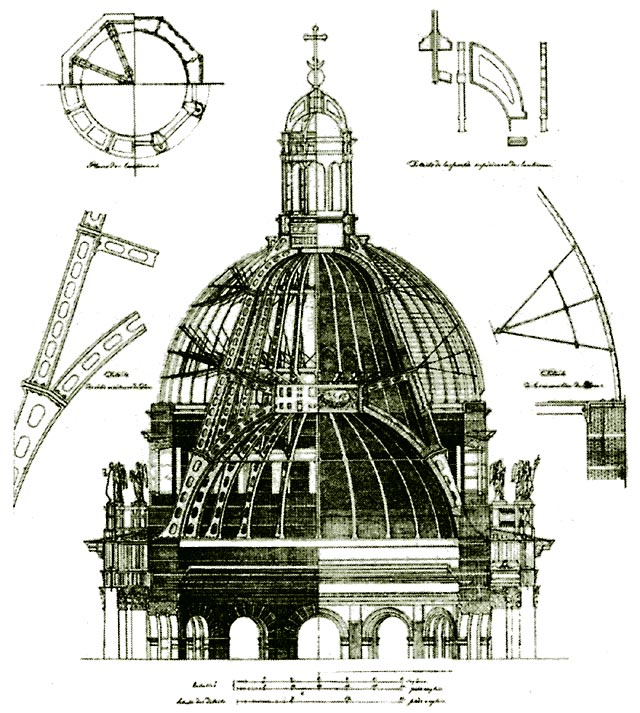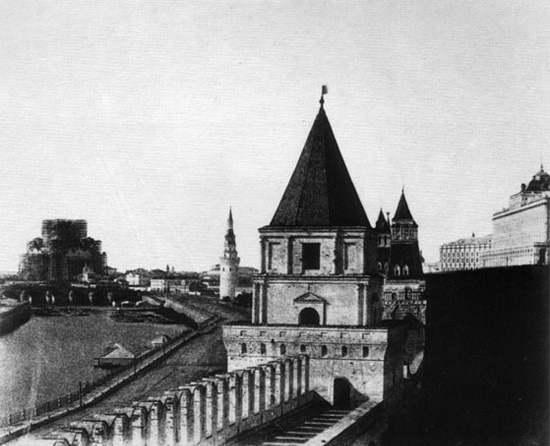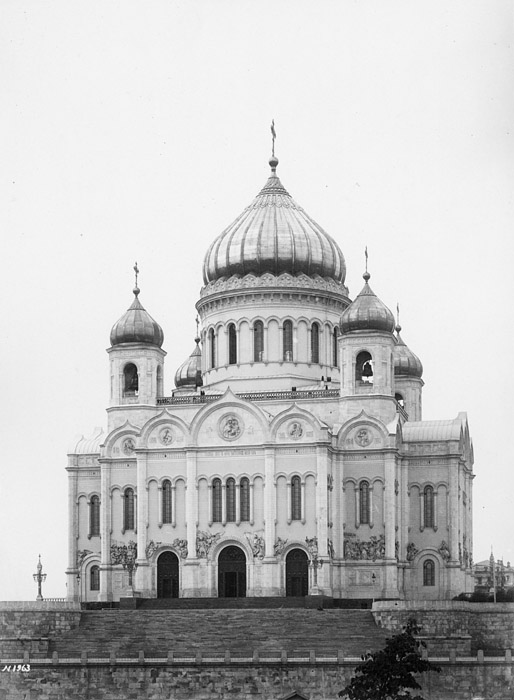|
Transfiguration Cathedral, Khabarovsk
The Transfiguration Cathedral (russian: Спасо-Преображенский собор, ''Spaso-Preobrazhensky sobor'') on a steep bluff overlooking the Amur River in Khabarovsk stands 96 meters tall and is supposed to be the third tallest church in Russia after St. Isaac's Cathedral and the Cathedral of Christ the Saviour. It was built over 2001-2004 to a traditional design reminiscent of Konstantin Thon's works. The church is surmounted by four Ukrainian-style gilded domes, the central one being the largest. Its spectacular location on a hill was chosen by Patriarch of Moscow and all Rus' Alexis II of Moscow during a helicopter flight over Khabarovsk. References See also * Khabarovsk City Cathedral * List of tallest Orthodox church buildings This is a list of tallest Orthodox church buildings in the world, all those higher than 70 metres. Traditionally, an Orthodox church building is crowned by one or several domes with Orthodox crosses on the top of each. ... [...More Info...] [...Related Items...] OR: [Wikipedia] [Google] [Baidu] |
Amur River
The Amur (russian: река́ Аму́р, ), or Heilong Jiang (, "Black Dragon River", ), is the world's tenth longest river, forming the border between the Russian Far East and Northeastern China ( Inner Manchuria). The Amur proper is long, and has a drainage basin of . ''mizu'' ("water") in Japanese. The name "Amur" may have evolved from a root word for water, coupled with a size modifier for "Big Water". Its ancient Chinese names were ''Yushui'', ''Wanshui'' and ''Heishui'', formed from variants to ''shui'', meaning "water".The fishes of the Amur River:updated check-list and zoogeography'' The modern Chinese name for the river, ''Heilong Jiang'' means "Black Dragon River", while the Manchurian name ''Sahaliyan Ula'', the Mongolian names " Amar mörön " (Cyrillic: Амар мөрөн) originates from the name " Amar " meaning to rest and ''Khar mörön'' (Cyrillic: Хар мөрөн) mean Black River. Course The river rises in the hills in the western part of Northea ... [...More Info...] [...Related Items...] OR: [Wikipedia] [Google] [Baidu] |
Khabarovsk
Khabarovsk ( rus, Хабaровск, a=Хабаровск.ogg, r=Habárovsk, p=xɐˈbarəfsk) is the largest city and the administrative centre of Khabarovsk Krai, Russia,Law #109 located from the China–Russia border, at the confluence of the Amur and Ussuri Rivers, about north of Vladivostok. With a 2010 population of 577,441 it is Russia's easternmost city with more than half a million inhabitants. The city was the administrative center of the Far Eastern Federal District of Russia from 2002 until December 2018, when Vladivostok took over that role. It is the largest city in the Russian Far East, having overtaken Vladivostok in 2015. It was known as ''Khabarovka'' until 1893. As is typical of the interior of the Russian Far East, Khabarovsk has an extreme climate with very strong seasonal swings resulting in strong cold winters and relatively hot and humid summers. History Earliest record Historical records indicate that a city was founded on the site in the eighth centur ... [...More Info...] [...Related Items...] OR: [Wikipedia] [Google] [Baidu] |
List Of Tallest Orthodox Church Buildings
This is a list of tallest Orthodox church buildings in the world, all those higher than 70 metres. Traditionally, an Orthodox church building is crowned by one or several domes with Orthodox crosses on the top of each. The overall height of the temple is measured by the highest point of the cross above the main temple. The number of domes is symbolical. One dome is a symbol of Christ or God, three domes are symbolic of Trinity, five domes symbolize Christ and Four Evangelists, seven domes are often used because seven is a holy number, and thirteen domes correspond to Christ and his twelve Apostles. Other numbers are also encountered. An Orthodox church building may also have a bell tower or zvonnitsa, either a part of the main church building, or standalone structure. Typically, bell tower is higher than the main temple. This list is divided into two sections, one listing the highest temples and the other listing the highest bell towers or zvonnitsas. Churches and Cathedra ... [...More Info...] [...Related Items...] OR: [Wikipedia] [Google] [Baidu] |
Russia
Russia (, , ), or the Russian Federation, is a transcontinental country spanning Eastern Europe and Northern Asia. It is the largest country in the world, with its internationally recognised territory covering , and encompassing one-eighth of Earth's inhabitable landmass. Russia extends across eleven time zones and shares land boundaries with fourteen countries, more than any other country but China. It is the world's ninth-most populous country and Europe's most populous country, with a population of 146 million people. The country's capital and largest city is Moscow, the largest city entirely within Europe. Saint Petersburg is Russia's cultural centre and second-largest city. Other major urban areas include Novosibirsk, Yekaterinburg, Nizhny Novgorod, and Kazan. The East Slavs emerged as a recognisable group in Europe between the 3rd and 8th centuries CE. Kievan Rus' arose as a state in the 9th century, and in 988, it adopted Orthodox Christianity from the ... [...More Info...] [...Related Items...] OR: [Wikipedia] [Google] [Baidu] |
Saint Isaac's Cathedral
Saint Isaac's Cathedral or Isaakievskiy Sobor (russian: Исаа́киевский Собо́р) is a large architectural landmark cathedral that currently functions as a museum with occasional church services in Saint Petersburg, Russia. It is dedicated to Saint Isaac of Dalmatia, a patron saint of Peter the Great, who had been born on the feast day of that saint. It was originally built as a cathedral but was turned into a museum by the Soviet government in 1931 and has remained a museum ever since, with church services held in a side chapel since the 1990's. In 2017, the Governor of Saint Petersburg offered to transfer the cathedral back to the Russian Orthodox Church, but this was not accomplished due to the protests of St Petersburg citizens opposing the offer. History The church on St Isaac's Square was ordered by Tsar Alexander I, to replace an earlier structure by Vincenzo Brenna, and was the fourth consecutive church standing at this place. A specially appointed com ... [...More Info...] [...Related Items...] OR: [Wikipedia] [Google] [Baidu] |
Cathedral Of Christ The Saviour
The Cathedral of Christ the Saviour ( rus, Храм Христа́ Спаси́теля, r=Khram Khristá Spasítelya, p=xram xrʲɪˈsta spɐˈsʲitʲɪlʲə) is a Russian Orthodox cathedral in Moscow, Russia, on the northern bank of the Moskva River, a few hundred metres southwest of the Kremlin. With an overall height of , it is the third tallest Orthodox Christian church building in the world, after the People's Salvation Cathedral in Bucharest, Romania and Saints Peter and Paul Cathedral in Saint Petersburg, Russia. The current church is the second to stand on this site. The original church, built during the 19th century, took more than 40 years to build, and was the scene of the 1882 world premiere of the '' 1812 Overture'' composed by Tchaikovsky. It was destroyed in 1931 on the order of the Soviet Politburo. The demolition was supposed to make way for a colossal Palace of the Soviets to house the country's legislature, the Supreme Soviet of the USSR. Construction s ... [...More Info...] [...Related Items...] OR: [Wikipedia] [Google] [Baidu] |
Konstantin Thon
Konstantin Andreyevich Thon, also spelled Ton (russian: Константи́н Андре́евич Тон; October 26, 1794 – January 25, 1881) was an official architect of Imperial Russia during the reign of Nicholas I. His major works include the Cathedral of Christ the Saviour, the Grand Kremlin Palace and the Kremlin Armoury in Moscow. Early life Konstantin, born in St. Petersburg to the family of a German jeweller, was one of three Thon brothers who all rose to become notable architects. He studied at the Imperial Academy of Arts (1803–15) under the Empire Style architect Andrey Voronikhin, best remembered for his work on the Kazan Cathedral, situated right in the middle of the Nevsky Prospekt. He studied Italian art in Rome from 1819 to 1828, and on his return home was admitted to the academy as its member (1830) and professor (1833). In 1854, he was appointed rector of the architectural division of the academy. Thon first attracted public attention with his sump ... [...More Info...] [...Related Items...] OR: [Wikipedia] [Google] [Baidu] |
Ukrainian Baroque
Ukrainian Baroque, or Cossack Baroque or Mazepa Baroque ( uk, Українське бароко або Козацьке бароко), is an architectural style that was widespread in the Ukrainian lands in the 17th and 18th centuries. It was the result of a combination of local architectural traditions and European Baroque. History Thanks to influences from Western Europe, from the late 16th century the lands of modern Ukraine came under the influence of the secularized Baroque form of art and architecture, which was still largely unknown in Moscow. According to the historian Serhii Plokhy, Peter Mogila, the Metropolitan of Kyiv from 1633 to 1647, was crucial in developing the style as part of his drive to reform the Ukrainian Orthodox Church and adapt the Church to the challenges of the Reformation and Counter-Reformation. Ukrainian Baroque reached its apogee in the time of the Cossack Hetman Ivan Mazepa, from 1687 to 1708. Mazepa Baroque is an original synthesis of Weste ... [...More Info...] [...Related Items...] OR: [Wikipedia] [Google] [Baidu] |
Patriarch Of Moscow And All Rus'
The Patriarch of Moscow and all Rus' (russian: Патриарх Московский и всея Руси, translit=Patriarkh Moskovskij i vseja Rusi), also known as the Patriarch of Moscow and all Russia, is the official title of the Bishop of Moscow who is the primate of the Russian Orthodox Church. It is often preceded by the honorific "His Holiness". While as the diocesan bishop of the Moscow diocese he has direct canonical authority over Moscow only, the Patriarch has a number of church-wide administrative powers within and in accordance with the charter of the Russian Orthodox Church. [...More Info...] [...Related Items...] OR: [Wikipedia] [Google] [Baidu] |
Alexis II Of Moscow
Patriarch Alexy II (or Alexius II, russian: link=no, Патриарх Алексий II; secular name Aleksei Mikhailovich Ridiger russian: link=no, Алексе́й Миха́йлович Ри́дигер; 23 February 1929 – 5 December 2008) was the 15th Patriarch of Moscow and all Rus', the primate of the Russian Orthodox Church. Elected Patriarch of Moscow in 1990, eighteen months prior to the dissolution of the Soviet Union, he became the first Russian Patriarch of the post-Soviet period. Family history Alexey Mikhailovich Ridiger was a descendant of a Baltic German noble family. His father, Mikhail Aleksandrovich Ridiger (1900–1960), was a descendant of Captain Heinrich Nikolaus (Nils) Rüdinger, commander of a Swedish fortification in Daugavgrīva, Swedish Livonia and knighted by Charles XI of Sweden in 1695. Swedish Estonia and Swedish Livonia became part of the Russian Empire in the aftermath of the Great Northern War, in the beginning of the 18th cen ... [...More Info...] [...Related Items...] OR: [Wikipedia] [Google] [Baidu] |
Dormition Cathedral, Khabarovsk
The Dormition Cathedral of Khabarovsk (russian: Градо-Хабаровский Успенский собор, ''Grado-Khabarovsky Uspensky sobor'') is a Russian Orthodox cathedral. It is one of the largest churches in the Russian Far East, and was built in 2000–02 to a design by Yuri Podlesny, a local architect. The five-domed church stands about 60 meters tall. Its design harks back to Konstantin Thon's design for the Annunciation Church in Saint Petersburg. The church contains a 19th-century copy of the Abazino icon of the Theotokos from a previous church on the site. That church was built in the 1890s and contained the marble tomb of Baron Andrei von Korff. It was demolished by the Communists in 1930. See also * Khabarovsk Metropolitan Cathedral The Transfiguration Cathedral (russian: Спасо-Преображенский собор, ''Spaso-Preobrazhensky sobor'') on a steep bluff overlooking the Amur River in Khabarovsk stands 96 meters tall and is supposed ... [...More Info...] [...Related Items...] OR: [Wikipedia] [Google] [Baidu] |







.jpg)

